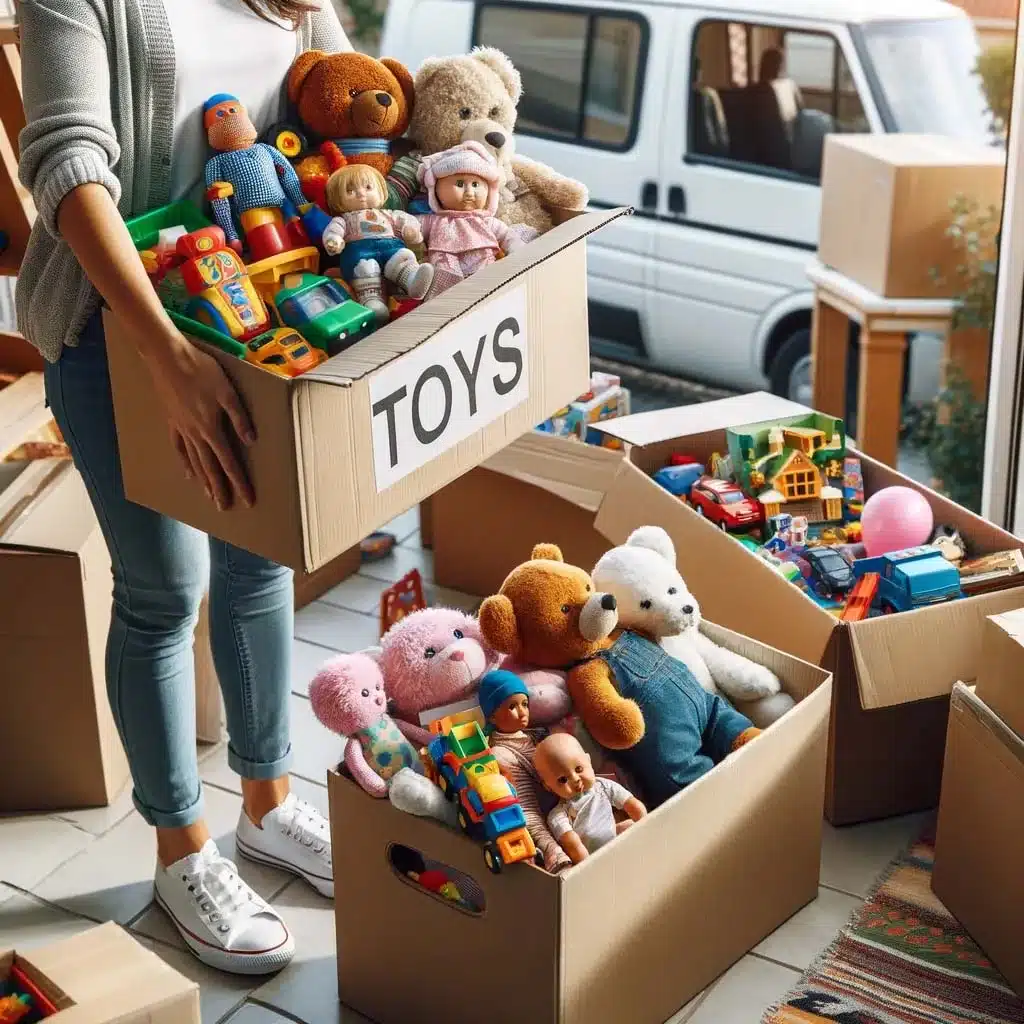How to Pack Toys for Moving

Packing toys for moving is often more complicated than it seems. Toys come in various shapes, sizes, and materials, with many holding sentimental or financial value. Proper packing ensures they arrive at your new home safe, organized, and ready for use. In this guide, we’ll walk you through sorting, preparing, and packing toys to make your move hassle-free.
What Are the Dangers of Failing to Properly Pack a Doll, for Example?
Proper storage safeguards toys during transit and helps avoid:
- Damage: Mechanical or electronic toys often have delicate parts that can break during shipping.
- Loss: Small components or sets can easily become misplaced if not stored together.
- Unpacking delays: Ineffective packing can make locating items after the move frustrating and time-consuming.
What Materials Will Help Me Pack Toys for Moving the Right Way?
Gather these essential supplies for packing toys:
- Strong cardboard boxes in various sizes
- Optional: Plastic containers with lids
- Bubble wrap
- Packing paper or newspaper
- Ziploc bags or small containers
- Packing tape
- Marker or labeling tape
Guidelines on How to Pack Toys the Right Way
Step 1: Sorting and Decluttering
- Declutter: Go through children’s toys to determine which ones are still used and needed. Donate or discard those no longer in use.
- Inspect for damage: Separate broken toys for repair or disposal.
Step 2: Cleaning the Toys
- Clean plastic and hard toys: Use a damp cloth or disinfectant wipes.
- Wash stuffed toys: Machine wash if possible.
- Dry thoroughly: Ensure toys are completely dry before packing to prevent mold or mildew during transit.
Step 3: Packing Process
- Choose the right containers:
- Use plastic bins for long-term storage or added protection.
- Large boxes for stuffed animals.
- Small boxes for fragile or heavy toys.
- Wrap fragile items:
- Wrap toys like dolls or small electronics with packing paper or bubble wrap.
- Place them in boxes with cushioning for extra safety.
- Organize sets:
- Store toy sets like LEGO or puzzles in Ziploc bags.
- Label the bags for easy identification during unpacking.
- Avoid overpacking:
- Don’t overload boxes to prevent damage from excessive weight.
- Seal and label boxes:
- Use packing tape to secure boxes and label them with the contents or the child’s name.
Tips for a Smooth Toy Packing Process
- Involve your children: Let them help pack their favorite toys to make the process fun and ease any anxiety about the move.
- Pack a “first-day” box: Include favorite toys for easy access during the first day at your new home.
- Color-code labels: Assign each child a color to make unpacking simpler and more organized.
Comparison of Packing Materials
| Material | Advantages | Disadvantages |
|---|---|---|
| Bubble Wrap | Great for fragile toys | Expensive for larger items |
| Packing Paper | Affordable and flexible | Offers less protection than bubble wrap |
| Plastic Bins | Durable and reusable | More expensive than cardboard boxes |
| Ziploc Bags | Keeps small pieces organized | Not suitable for larger toys |
Conclusion
The key to a successful move is the proper organization and packing of your children’s toys. Investing time and effort into sorting, cleaning, and packing ensures a smoother relocation process. By following this guide, you’ll protect your children’s cherished possessions and create a stress-free moving experience for the entire family.
